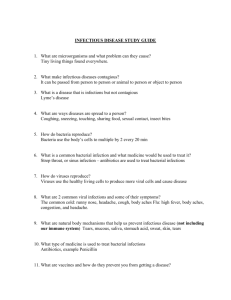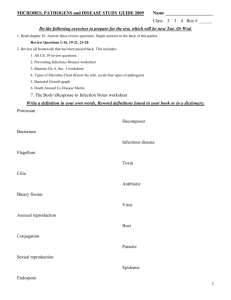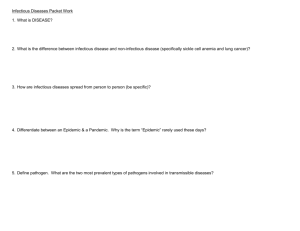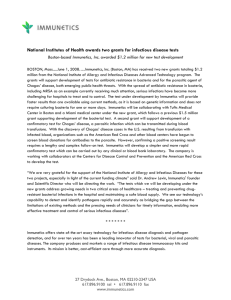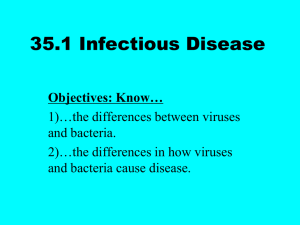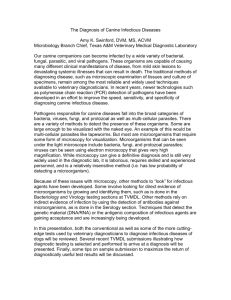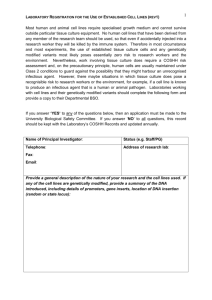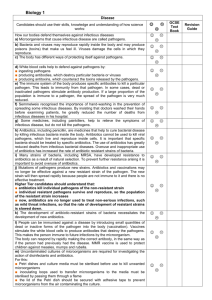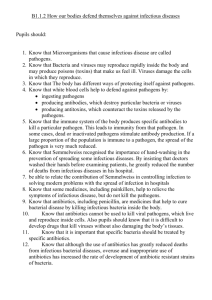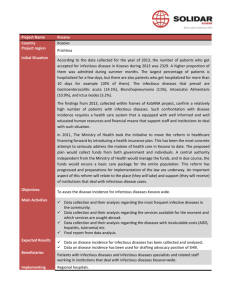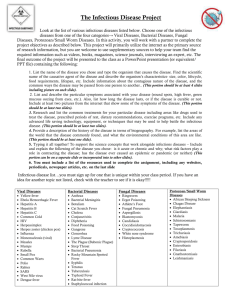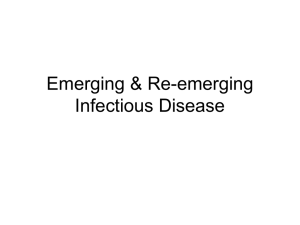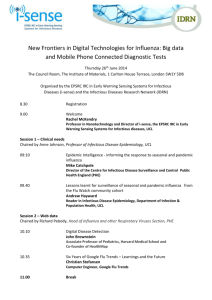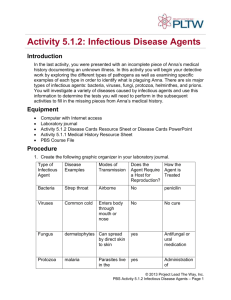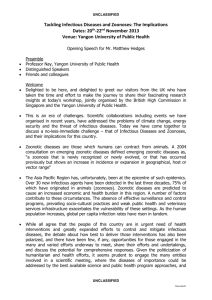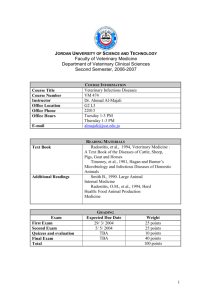Unit 7 packet infectious diseases
advertisement
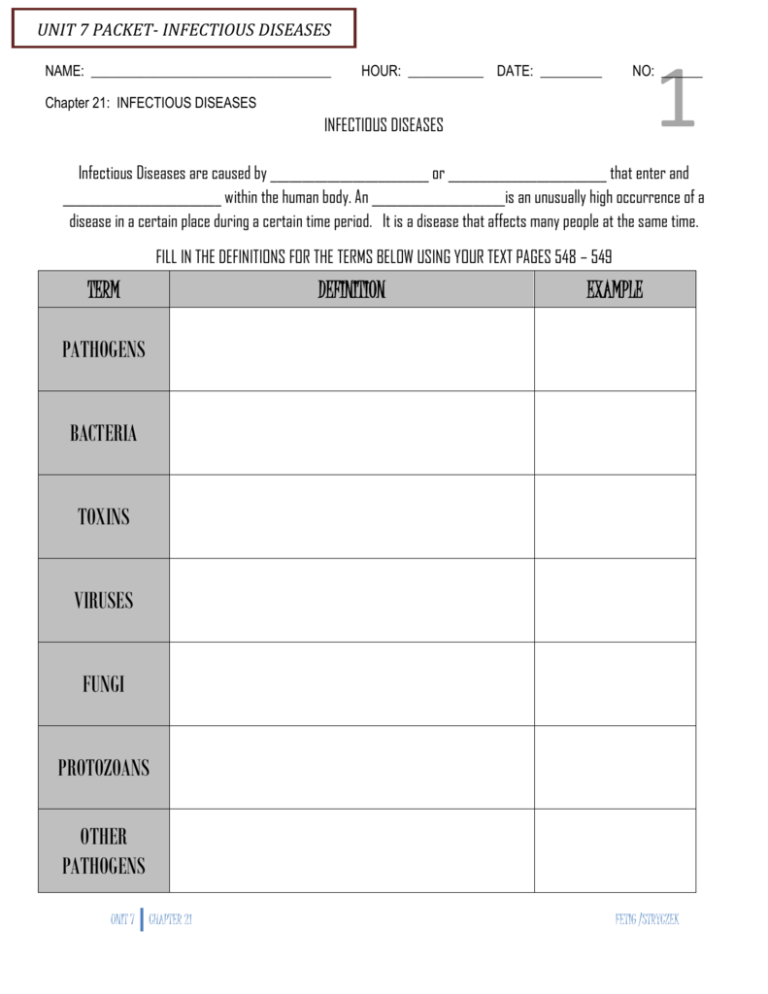
UNIT 7 PACKET- INFECTIOUS DISEASES NAME: ___________________________________ HOUR: ___________ DATE: _________ 1 NO: ______ Chapter 21: INFECTIOUS DISEASES INFECTIOUS DISEASES Infectious Diseases are caused by _________________________ or _________________________ that enter and _________________________ within the human body. An _____________________is an unusually high occurrence of a disease in a certain place during a certain time period. It is a disease that affects many people at the same time. FILL IN THE DEFINITIONS FOR THE TERMS BELOW USING YOUR TEXT PAGES 548 – 549 TERM DEFINITION EXAMPLE PATHOGENS BACTERIA TOXINS VIRUSES FUNGI PROTOZOANS OTHER PATHOGENS UNIT 7 CHAPTER 21 FETIG /STRYCZEK Chapter 21: INFECTIOUS DISEASES HOW PATHOGENS ARE SPREAD HOW DOES A PERSON COME IN CONTACT WITH A PATHOGEN HOW WOULD A PATHOGEN SPREAD BY EACH ONE OF THE METHODS 2 EXAMPLES OF INFECTIOUS DISEASES SPREAD WITH THAT METHOD INFECTED PERSON INFECTED ANIMAL CONTAMINATED OBJECTS CONTAIMINATED FOOD, SOIL OR WATER UNIT 7 CHAPTER 21 FETIG /STRYCZEK Chapter 21: INFECTIOUS DISEASES 3 YOUR BODY HAS 3 LINES OF DEFENSE AGAINST PATHOGENS YOUR BODY’S PHYSICAL AND CHEMICAL DEFENSES 1ST LINE OF DEFENSE BODY’S DEFENSES 2ND LINE OF DEFENSE INFLAMMATION INFLAMMATION ________________________ is your body’s general response to all kinds of ________________________, from cuts and scrapes to internal ________________________. After injury chemicals are released and blood vessels enlarge. ________________________, other fluids and ________________________ blood cells, also known as ________________________, begin to leak out of the enlarged vessel. The phagocytes engulf and ________________________ pathogens. During this process the infected area becomes red, ________________________, and sore. This is inflammation. 3RD LINE OF DEFENSE IMMUNE SYSTEM UNIT 7 CHAPTER 21 FETIG /STRYCZEK Chapter 21: INFECTIOUS DISEASES COMMON INFECTIOUS DISEASES BACTERIAL DISEASES 4 Infectious diseases caused by bacteria are known as bacterial diseases. These diseases can occur over and over throughout your life. They are curable with the proper medical attention and most commonly treated with antibiotics. Antibiotics are drugs that inhibit or kill bacteria. Different antibiotics are available for different bacterial diseases. BACTERIAL DISEASE SYMPTOMS STREP TROAT LYME DISEASE BACTERIAL MENINGITIS TUBERCULOSIS VIRAL DISEASES Infectious diseases caused by viruses that enter the body and multiply are known as viral diseases. These diseases can not be treated with antibiotics but symptoms can be treated with over-the-counter medications. VIRAL DISEASE SYMPTOMS COMMON COLD INFLUENZA (FLU) PNEUMONIA HEPATITIS (A, B, AND C) UNIT 7 CHAPTER 21 FETIG /STRYCZEK
